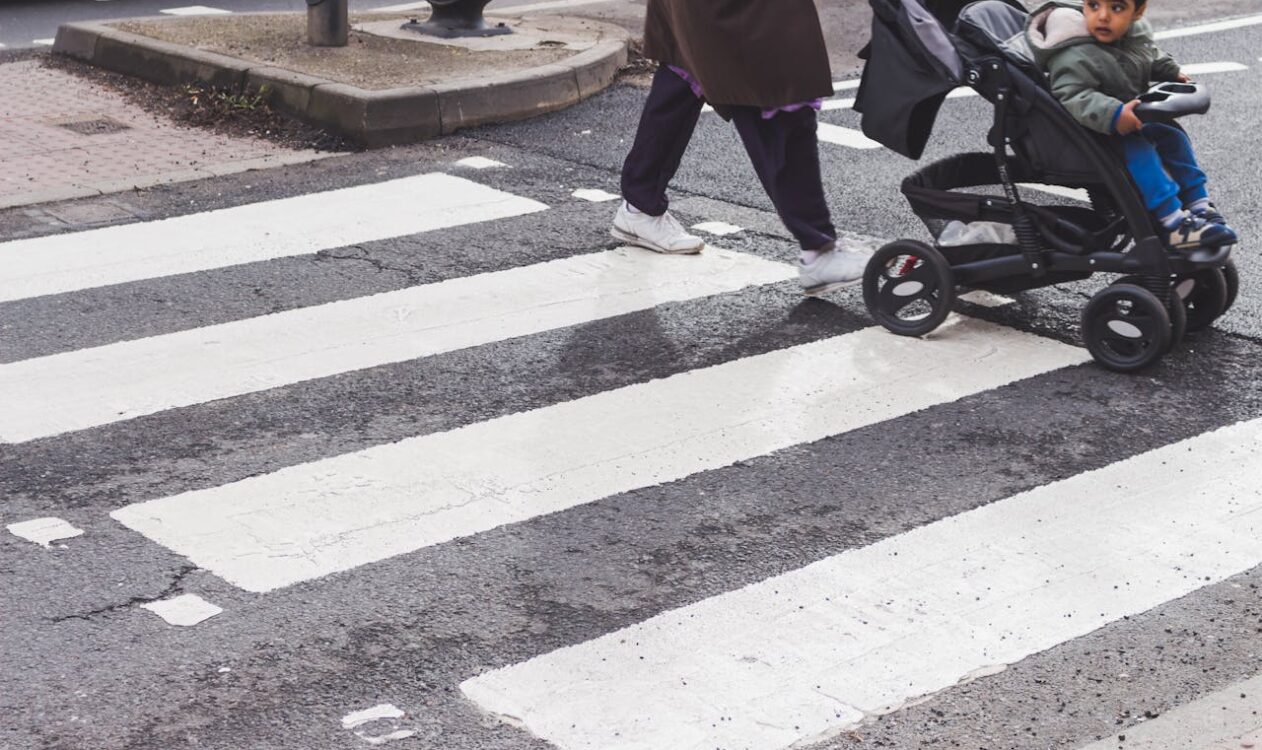Crosswalks are intended to protect the safety of pedestrians from oncoming vehicles. However, their existence is not enough to completely eliminate all risks. In fact, pedestrian safety has become an increasing concern across the country. According to the National Highway Traffic Safety Administration (NHTSA), pedestrian fatalities have continued to rise almost every year after hitting a record low of 4,109 deaths in 2009. In 2021, 7,388 pedestrians were killed, and another 60,577 were injured in a traffic-related accident.
As traffic-related pedestrian deaths have risen year over year, Kansas remains one of the safer states in the country for pedestrians. According to the Kansas Traffic Safety Resource Office, 33 pedestrians were killed in traffic crashes, and 93 people were seriously injured in Kansas in 2022, making it the 17th safest in the United States. When taking population into account, additional NHTSA data shows that Kansas is the seventh safest state for pedestrians based on pedestrian fatality rate per 100,000 people.
Some of the leading factors behind fatal pedestrian crashes are visibility and alcohol. According to the NHTSA, 76% of all accidents that led to a pedestrian death occurred in the dark, with 51% of all crashes occurring between 6 p.m. and 11:59 p.m., and 49% of all fatal pedestrian crashes involved a blood alcohol concentration (BAC) of at least .01% for the driver and/or the pedestrian. However, the vast majority of all fatal crashes didn’t occur at a crosswalk with only 16% of all reported crashes occurring at an intersection.
Crosswalks have been proven to reduce the risk for pedestrians — the Kansas Department of Transportation Crosswalk Guidance & Guide to Crosswalks Countermeasures breaks down how the state approaches the installation of and guidance surrounding their use — but aren’t infallible safety measures. There are also limitations on what kinds of legal protections they offer. In some cases, certain actions will effectively invalidate a potential claim, which is one of the reasons why it’s so important to understand and internalize crosswalk laws in Kansas.
Who Has the Right-of-Way at Crosswalks in Kansas?
Signage plays a huge role in who has the right-of-way at a crosswalk. Under Kansas Statutes § 8-1508, vehicles have varying right-of-way depending on the color of the stoplight.
- Green light: Drivers have priority when there’s a green light, but they are still required to yield the right-of-way to other vehicles or pedestrians already legally using adjacent crosswalks when making a turn. In all cases, drivers are expected to move with caution through intersections.
- Yellow light: Drivers are still permitted to make turns and enter an intersection when the light is yellow but are expected to understand that it will turn red shortly, thereby restricting the driver’s movements. Pedestrians facing a yellow signal, unless otherwise directed by pedestrian control signals, should not start crossing the road but can finish crossing if they are already in the crosswalk.
- Red light: Vehicles must come to a complete stop at a red light before entering the crosswalk. Unless a traffic sign otherwise restricts making a turn, drivers are allowed to cautiously enter an intersection to make a right turn but must yield the right-of-way to oncoming vehicles and pedestrians legally using the crosswalk.
- Pedestrian control signals: According to Kansas Statutes § 8-1509, as long as there is a walk signal present, pedestrians have the right-of-way to enter and use a crosswalk, assuming a vehicle is not already safely and legally making a turn through the intersection. Once the don’t walk signal starts to flash, pedestrians are no longer permitted to enter the crosswalk, but pedestrians already in the crosswalk can finish crossing the road.
- No pedestrian control signals present or functioning: According to Kansas Statutes § 8-1533, drivers are required to yield the right-of-way to any pedestrian using a crosswalk who is already on the half of the road that the vehicle is traveling on or if the pedestrian is approaching so closely from the other side that it puts them in danger. Pedestrians are also restricted from suddenly leaving the curb or other place of safety to walk or run into the path of an oncoming vehicle already so close to be considered an immediate hazard. It’s also illegal for any vehicle to overtake or pass another vehicle stopped at a marked or unmarked crosswalk at an intersection to permit a pedestrian to cross the street.
In the vast majority of cases, crosswalk laws in Kansas can be simplified to: follow the posted signage, yield the right-of-way to whoever was there first, and give generous space to vehicles and pedestrians entering or using a crosswalk, whether or not it’s marked.
What To Do If Someone Injured You Because They Violated Your Right of Way as a Pedestrian
If you or someone you love was seriously injured in a car accident while using a crosswalk, you may be able to take legal action to secure compensation to cover the cost of your medical bills, lost wages, rehabilitation, and more. Reach out to an experienced Kansas pedestrian accident attorney to discuss your case and learn more about what steps you need to take next.








